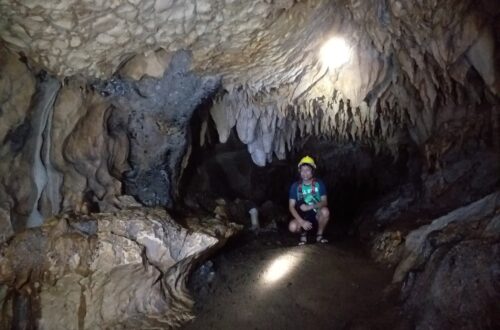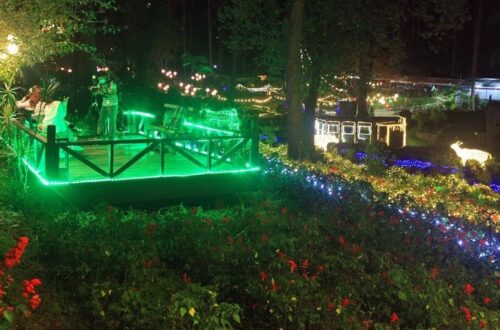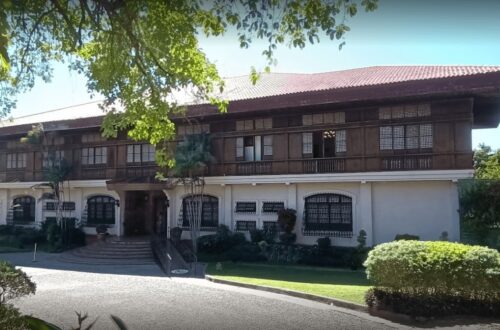
Santa Maria Church
Introduction
Santa Maria Church is a UNESCO world heritage site situated on top of a sixty feet high hill in the municipality of Santa Maria in the province of Ilocos Sur. It offers visitors an extensive view of Santa Maria’s lower plains. Santa Maria Church has a length of 100 meters and a width of 23 meters and has an 85 feet grand stairway made from granite. It is enclosed by a 1.6-meter thick defensive retaining wall on all sides like a citadel and the wall is enlarged by stone buttresses every 10 meters. Santa Maria Church is 38 kilometers from Vigan City and 370 kilometers away from Metro Manila. It is a two-hour drive from La Union.
According to its history, Santa Maria Church was originally designed and built in the year 1765 on top of a hill by the Augustinian friars as a chapel in Narvacan during the Spanish colonial period in the Philippines. Then it became a parish church in the year 1769 whose patron was Nuestra Señora de la Asuncion. The church was rebuilt and the bell tower was constructed separately beside the church in 1810. As the years goes by, it served as temporary lodging for priests going to Abra. In the year 1863, the church was changed and it was surrounded by large rocks or protective walls on both sides. The priest named Lorenzo Rodriguez rebuilt and remodeled the stone church. By virtue of Presidential Decree No. 260 in August 1973, as amended by Decree No. 375 in January 1974, and Decree No. 1515 in June 1978. This church has been declared a national historic landmark and the National Historical Commission of the Philippines place a marker next to the door of Santa Maria Church. Fast forward, Santa Maria Church was listed as a UNESCO World Heritage Site on the year 1993 embodying the four delightful Spanish earthquake Baroque churches in the Philippines. Then in 2015, the Santa Maria Church Complex and Cemetery was declared a National Cultural Treasure of the Philippines. As of today, Santa Maria Church is one of the tourist attractions in Ilocos Sur.

Name: Santa Maria Church
Location: near Santa Maria – Burgos Road, Ilocos Sur, Philippines
Features: baroque church and defensive wall on all sides
My trip to Santa Maria Church
Santa Maria Church was not included in our detailed itinerary but our driver told us that this church is really beautiful and is just beside the main road. For this reason, it was the last place to visit on our Ilocos 3 days and 2 nights trip. It was around 3 pm when we drop off at the main road and from a distance we have a glimpse of the church facade.
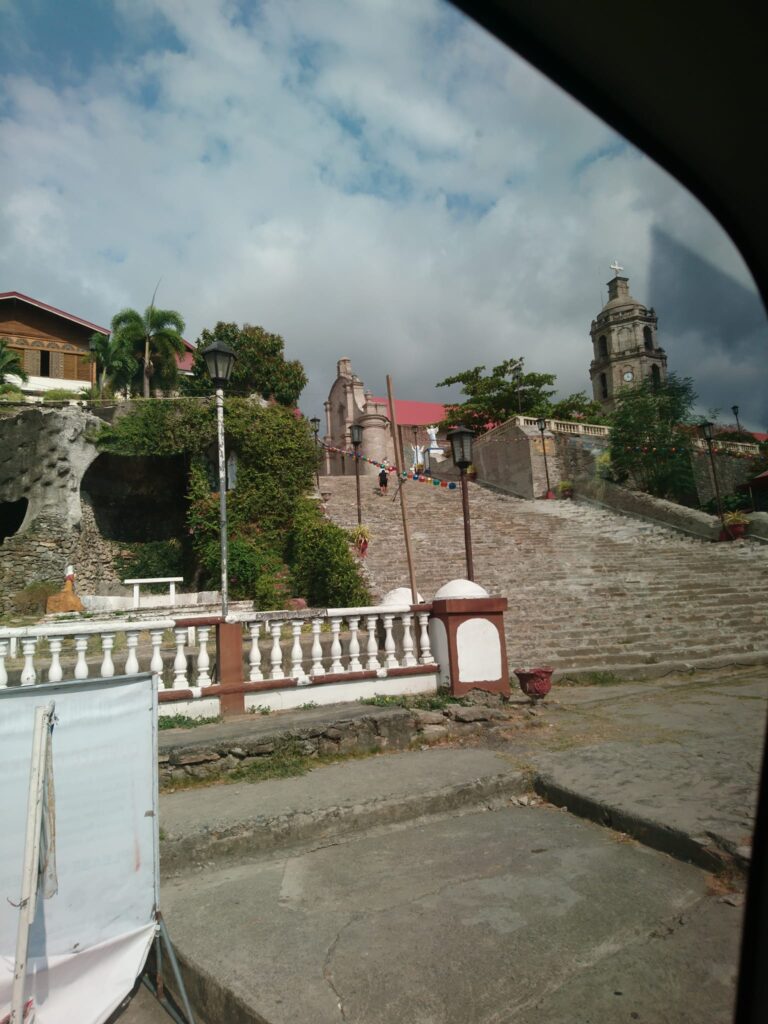
We climb the imposing three-flight stairway and it takes us more than 85 steps to reach the top and courtyard. From there, we have a comprehensive view of the town of Santa Maria as the church is seated on top of a hill. The Santa Maria Church watches over the whole town and continues to serve as a window to the country’s past. In my opinion, the grand stairway is a superb entrance to such an incredible view and structure.
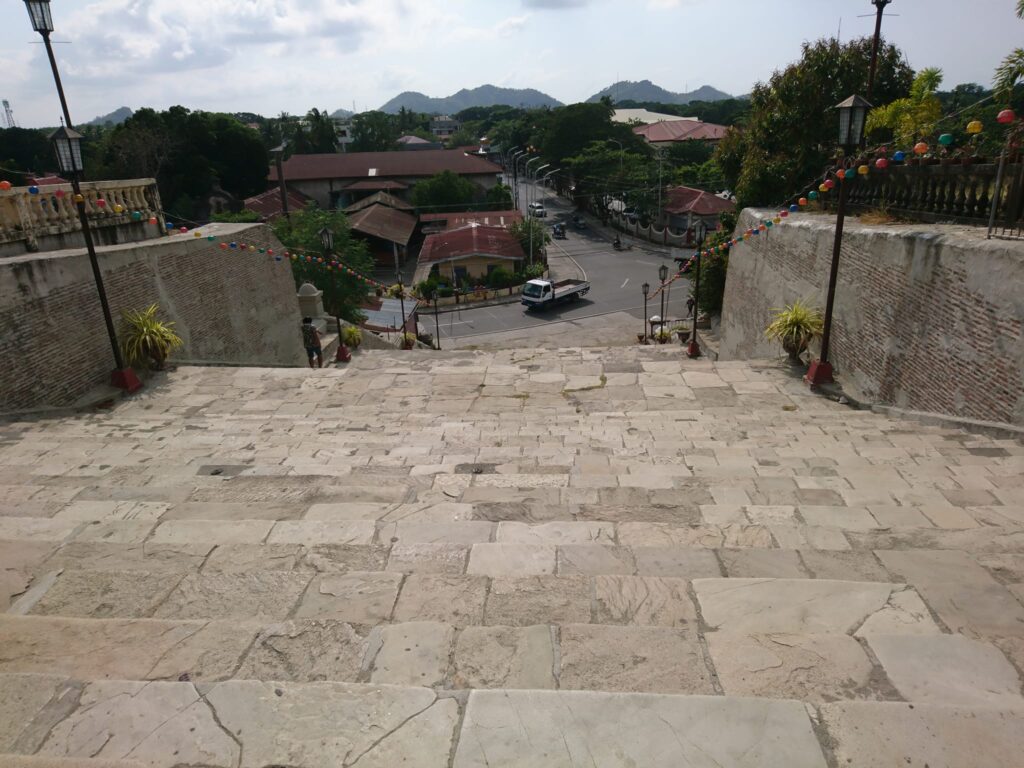
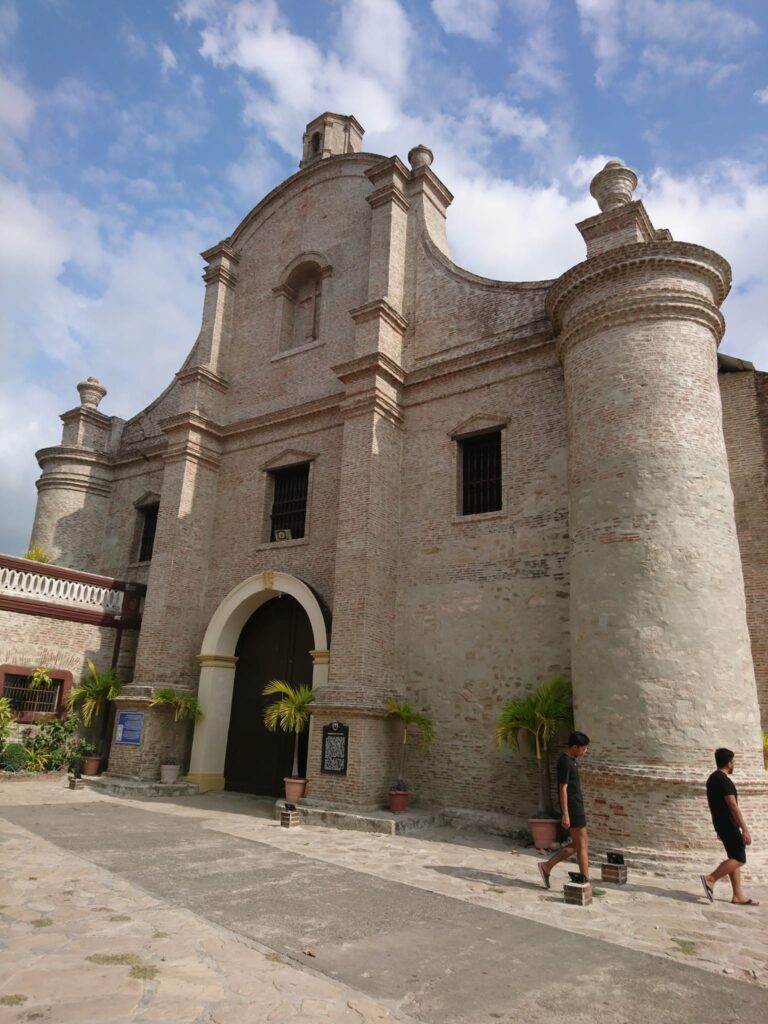
The composition of the church is dissimilar to other churches in Northern Luzon. It is an eccentric structure with a varied architectural design of mortar and bricks. It is enclosed by a huge defensive wall on all sides like a fortress. The church facade has one large arched entrance and three rectangular windows on top of it. On the other hand, the whole facade is framed on the sides by big roundabout buttresses topped by urn-like finials that serve as a safeguard against earthquakes. The foremost buttress at the front is furnished with an immense bas-relief recapitulating how the statue of Our Lady of Assumption was discovered on top of a tree. The relief is distinguishable as visitors climb the front stairway. Meanwhile, the central buttress on the back is set up similarly to a flight of stairs for smooth upkeep of the roof back.
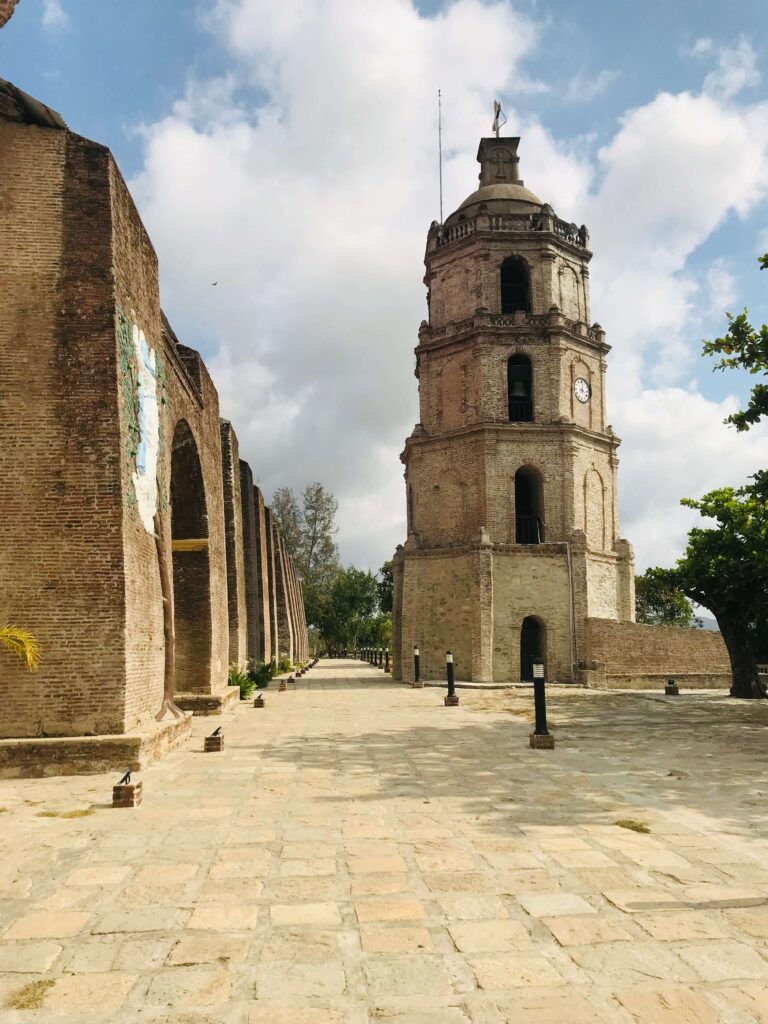
Just beside the extremely gorgeous church, we can see the freestanding pagoda-like bell tower which is not parallel to the church facade. It is positioned about a third of the wall from the front side. The octagonal four-story bell tower was constructed broadly with each level becoming less wide til it reaches the top section. The top section is enveloped by a big cupola and a Christian cross symbol can be seen above it. On the third level, a big clock just beside the stairway can be seen by churchgoers and devotees. The blank walls in the bell tower are synchronized alternatively with huge open windows.

Just right behind this historic church, I can see below the wide stairway and brick walkway that routes to the square shape cemetery surrounded by evergreen. The beautiful old cemetery is the ruins of the ancient graveyard and old brick chapel with skillfully finished and rarely seen architectural details. It was closed and abandoned in 1987 due to flooding situation and eventually covered by a variety of wild vegetation as the years passed by. Then it is restored and protected for future generations to see.
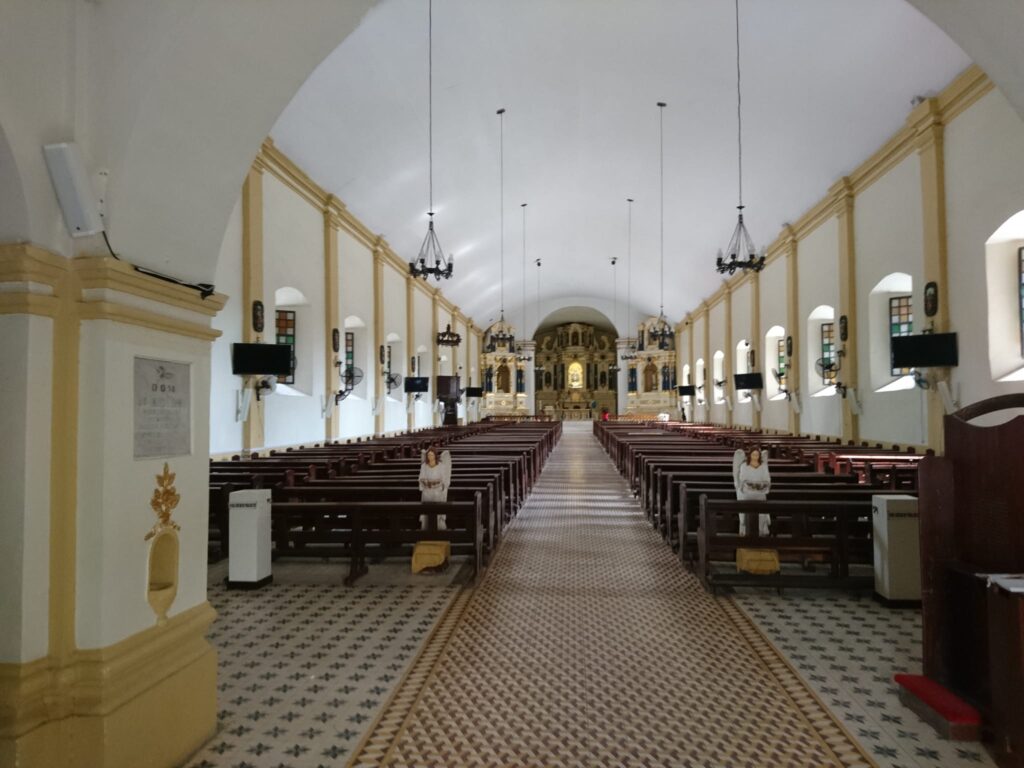
Then a few moments later, as we go inside the Santa Maria Church, I found out that there were black hanging chandeliers on both sides and the walls and barreled ceilings are painted white which is so attractive to the human eye. Also, the standard wooden seats are nicely placed on the periphery emphasizing the tiles on the center aisle leading to the yellowish altars of high Baroque style. Furthermore, the church’s interior exhibits the use of embellishing aboriginal elements and the portrayal of Roman Catholic patron saints dressed in conventional attire. From my point of view, the church serves as a reminder of Spanish supremacy and influence in the Philippines during the eighteenth century. I’m very impressed that this church still stands strong even though it encounter various earthquakes. Without a doubt, the church structure really has stories to tell and it was very captivating.
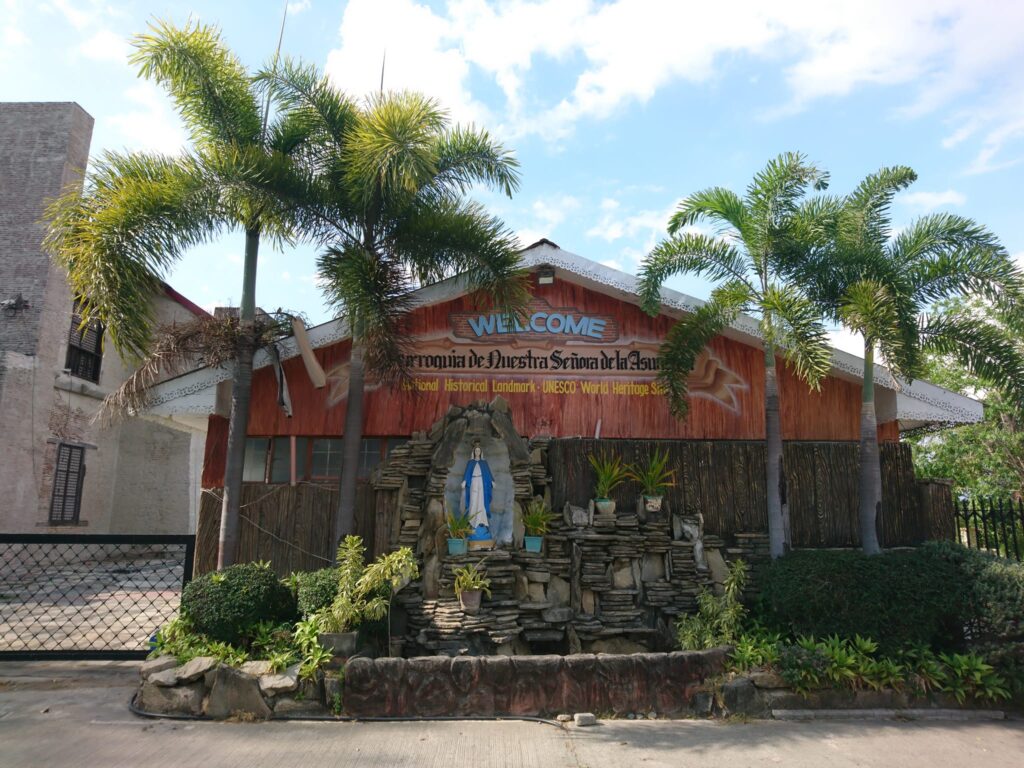
Then as we continue to explore the place, I can see the National Historical Landmark signage just above the statue of Nuestra Señora de la Asuncion. To be honest, I don’t really expect that this church is a UNESCO world heritage site since the church is not well known to me, unlike Paoay Church. Nonetheless, I appreciate history and the place is so solemn. Also, it’s nice to hear the chirping of birds and feel the cold breeze. Then it came to my mind that this place is really nice for watching the sunset because it has a very nice view. Anyway, we stay at Santa Maria Church for nearly thirty minutes and for the most part, I’m very much enthralled by its size and design.
Reminders and Tips:
- Always follow the minimum health protocols and observe physical distancing.
- Do not litter and use the trash bins provided to maintain the cleanliness of the surroundings.
- Do not touch or play with the spotlights installed around the church and do not lean on the light stands lined along the way.
- Restrain your pets and be responsible enough to clean their poofs if ever.
- You can buy souvenirs at the Parish office.
- Above all, park your vehicles in designated parking areas and do not bring them inside the church premises.
How to Go to Santa Maria Church
By commute
- From the Partas bus terminal in Quezon City, ride a bus bound for Vigan City and tell the bus conductor to alight you near the Savemore Market in Santa Maria, Ilocos Sur.
- Then walk for several minutes leading to the Santa Maria Church.
By private car
- From Candon City Public Market, drive along the MacArthur Highway and make a right turn going to the Santa Maria – Burgos Road.
- Then after a few minutes, make a left turn going to the church drive located at the back of the church where you can safely park your car.
There you have it, churchgoers and religious people. Love the Philippines and always remind yourself that you are blessed in so many ways. Comprehensively, I desire that this blog has been glaring to you and to your family. God bless us all and have a great day.


